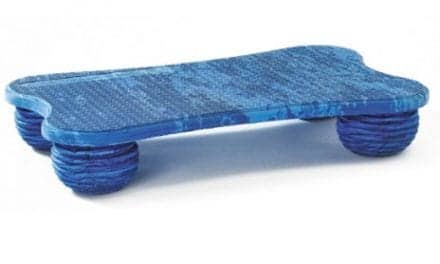A new study evaluates the effectiveness and safety of high-intensity rehabilitation for older adults in skilled nursing facilities. The study, published in Physical Therapy, was conduced by researchers from the University of Colorado Anschutz Medical Campus.
Skilled nursing facilities provide medical and rehabilitation services to individuals post-hospitalization to help facilitate the transition to home or the next level of care. However, recent research has shown the trajectory of functional recovery following hospitalization and skilled nursing facilities care is generally poor, with less than 25 percent of patients returning to pre-hospitalization levels of function.
“Our study identified an impactful opportunity to improve the way we care for patients in skilled nursing facilities. Our findings demonstrate that high-intensity resistance training is safe, effective, and preferable in caring for medically complex older adults in skilled nursing facilities.
— lead author Allison Gustavson, PT, DPT, PhD, at the CU Anschutz Medical Campus
Usual and High-Intensity Care Put to the Test
The researchers implemented a study consisting of 103 participants split into two nonrandomized independent groups (usual care and high-intensity) within a single skilled nursing facility. For both groups, physical therapists administered the Short Physical Performance Battery and gait speed at evaluation and discharge. Additionally, an observational checklist and documentation audits were used to assess treatment fidelity and regression analyses evaluated the response of functional change by group.
For the high-intensity training, the physical therapists used the i- STRONGER program (Intensive Therapeutic Rehabilitation for Older Skilled Nursing Home Residents).
The results suggest that patients participating in the high-intensity program increased their function, specifically by significantly increasing their walking speed from evaluation to discharge by 0.13 m/s — which exceeds clinically meaningful changes in walking speed — and reduced their stay at the skilled nursing facility by 3.5 days.
Results Signal the Need to Change Intensity Speed
The researchers advocate that their findings signal the need to fundamentally change the intensity of rehabilitation provided to patients with medically complex conditions to promote greater value and patient experience within post-acute care.
“Our study shows that the quality of rehabilitation compared to the quantity drives better outcomes. These findings provide a timely solution to address rehabilitation value in the context of recent post-acute care changes by policymakers who are looking to raise the bar on the quality and efficiency of post-acute care services.
“We are eager to support the transition to this more effective and safer, high-intensity care approach. We are encouraged by the results that accelerated the improvement in patient function, created positive patient and clinician experience, and resulted in less time needed for care in the skilled nursing facility. As always, and especially now in the era of COVID-19, less time spent in an institutional setting is desirable.”
— Jennifer Stevens-Lapsley, MPT, PhD, FAPTA, principal investigator
[Source(s): University of Colorado Anschutz Medical Campus, EurekAlert]
Related Content:
Discharge to Home or Nursing Care After Stroke Hinges on Outcomes Measures Scores
Net Health Study Compares Telehealth Rehab Therapy with In-Clinic Visits
In RA Patients, This Determines Worse Joint Replacement Outcomes





